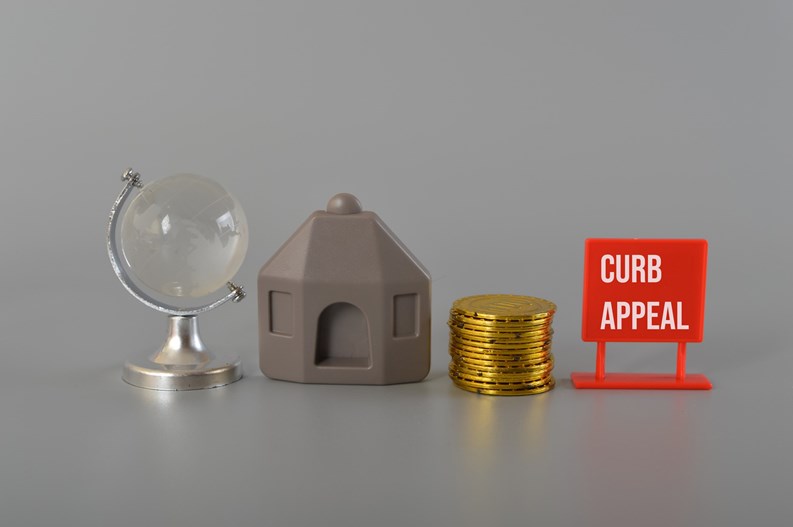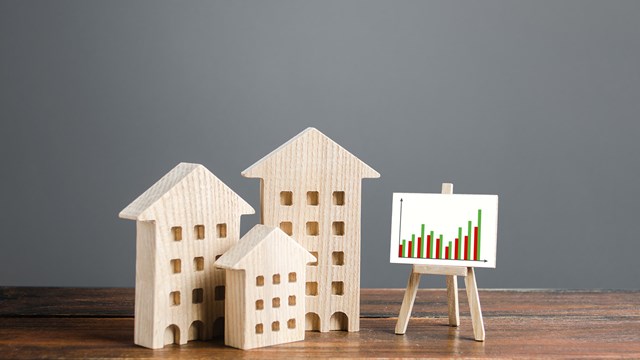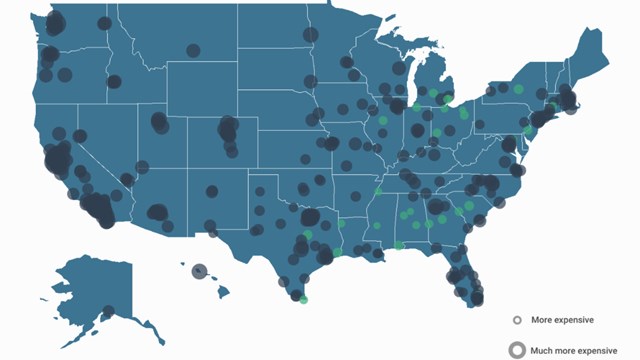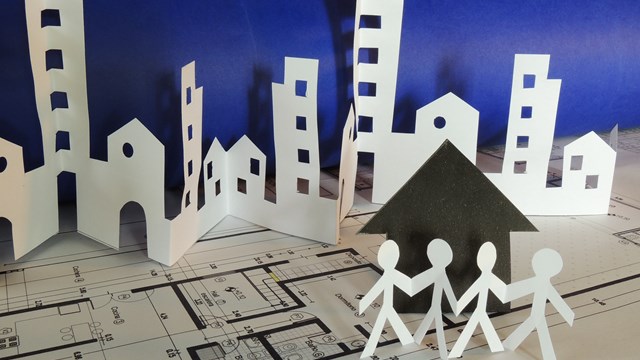First impressions may not always tell the full story of a building (or a person, or a book, for that matter), but in the case of a multifamily building or HOA, the very first experience of a property—its exterior, entry spaces, even how staff comport themselves—definitely sets a tone; it all establishes a vibe, if you will. And if that vibe isn’t positive for whatever reason, the wonderful world inside the bricks and mortar may go unseen. “Curb appeal,” says Joanna Mayfield Marks, a broker with NYC-based brokerage Brown Harris Stevens, “is the first impression anyone visiting a building gets. In New York City,” she notes, “it extends beyond the front door into the common areas including the lobby and the hallways. A friendly staff can be a part of curb appeal, too.”
Spit & Polish
The most basic, fundamental component in curb appeal is neatness. Neatness, cleanliness, and orderliness are the foundations on which curb appeal is based—and, happily, are among the least expensive, most easily accessible elements of making a so-so looking property really come alive.
“As a manager,” says Dan Wollman, CEO of Gumley Haft, a management firm based in Manhattan, “curb appeal means that I want to make sure that the front of the building and sidewalk are clean at all times. That the flowers are watered and perky, and that the street-facing windows and brass are always clean and shining. I want to see the door person standing, and with good posture. His or her tie is pulled up and they look neat, clean, and alert, because the first thing you see is the impression you have of the whole building. If I was a buyer, that’s what I would be looking at. The lobby should be clean, and always appear freshly painted. If the paint job looks tired, it’s time for a repaint. Furniture must be clean. It’s there to be part of the picture, not to be inviting. The lobby must look grand. The concierge station should be free and clean of papers, with no packages on the floor. If it looks dumpy, it makes a bad impression and will turn off potential buyers.”
“The first emphasis is on cleanliness,” agrees Scott Wolf, CEO of Brigs, a property management company based in Boston. “When you enter a property, whether it be an apartment building in an urban setting or a more suburban townhouse community, you want to have something that makes for comfort. You are addressing the five senses. A fresh scent, for instance. Planters outside are always attractive. The first factor, though, is aways cleanliness. Making sure glass is always clean, lights are working. You want the same color and kind of light bulbs throughout the space. If one bulb is white light and the other yellow, the effect is not good. Mailboxes should be uniform with uniform labels—not taped paper. These things should be nice, consistent, and uniform. It may seem minor, but it’s important.”
Old School or New?
While the term ‘curb appeal’ may be of relatively recent coinage, the concept itself is not new. After all, cleanliness is and always has been in style. Even with people’s expectations evolving over time, the idea of what makes for an attractive, ‘curb-appealing’ building has largely remained consistent.
According to Wollman, curb appeal hasn’t changed for him much over the past decades. “It’s the same. It never changes. First impressions are first impressions.”
Wolf takes a similar position. “It’s pretty universal,” he says, “and that hasn’t changed over time.”
While the fundamentals of what makes a property visually attractive (cleanliness, organization, good physical maintenance, etc.) may be more or less the same in 2024 as they were in 1924, says Stephanie Harmon, a general manager with FirstService Residential based in Monroe, New Jersey, “the concept has evolved in a variety of ways over the years. One of the biggest factors that we observe in the industry today is an emphasis on sustainability and eco-consciousness,” she says. “Environmental concerns influence choices: water-wise landscaping and native plants are gaining popularity.”
Additionally, along with physical curb appeal, digital curb appeal has also come into play, and is something for boards and managers to take into consideration. “Potential buyers look online first today,” stresses Harmon. “High-resolution images of the community and units should be taken professionally, to ensure that the best images represent the community. Communities should also focus on creating outdoor living spaces, like decks, rooftops, and well-designed patios that add functionality and value. But, while trends evolve, the core principle of curb appeal remains—creating a pleasant and inviting exterior that enhances the value of your property.”
Mayfield Marks agrees, noting that “today, 90 percent of buyers see their property first via the internet. As buyers sometimes eliminate options based solely on the photos from their internet search results, it pays to present pretty, landscaped exterior shots for curb appeal along with beautifully staged interiors. In the case of the digital buyer, there is much more filtering, and they may not visit a property if the online representation isn’t gripping enough.”
Impact on Sales
Perhaps the most significant impact of curb appeal is on sales. The question is, just how strong is that impact?
“It’s impossible to put a number on it,” says Wollman. “In more expensive or luxury buildings, you can’t minimize the importance. At some level, people will buy the apartment if they like the apartment. On balance, we can’t say what the number is or what it adds to a unit’s purchase price—but a sloppy lobby doesn’t help the sale. It could lower the price, but again we don’t know how much. It’s like anything else: if it looks good, you feel good. If you buy an Armani suit, you feel good. If you feel good about your home and how it looks, it’s the same thing.”
Wolf agrees. “We can’t definitively say how much unit price is affected by curb appeal more broadly,” he says, “but lack of curb appeal will definitely impact in a negative fashion. Buyers will look for properties with a better overall welcoming appearance. They don’t worry about aging elevators or boilers like board members do. They look at the appearance of the building—they think, ‘What will my friends think when they come to visit where I live?’”
“Within a building or HOA,” adds Harmon, “curb appeal can significantly impact individual unit sales prices, even within the same building footprint. Studies have shown increases of 5 to 10 percent or even higher for units with better curb appeal. Buyers form an opinion within seconds upon seeing the building exterior and common areas. Well-manicured landscaping, clean walkways, maintained roadways and curbing, state-of-the-art amenities, and a welcoming entrance all signal a well-managed and desirable property. There is also the perception of value. High curb appeal indicates a pride of ownership and investment in the community, leading buyers to perceive units and homes as more valuable.”
One of the worst curb appeal problems, and one that is hard to control, particularly in larger urban markets like New York and Chicago, is temporary scaffolding that is often erected around buildings for months at a time while repairs and other exterior work are carried out. Mayfield Marks shares that she recently asked a seller to delay listing their unit until the scaffolding around the building was removed. “Not only does scaffolding signal to a buyer a large capital expense,” she says, “it shrouds the building, darkens the apartments, and covers all the colorful landscaping. When a building is clean and neatly landscaped with a friendly staff, it is very appealing. One of the most appealing buildings I recently represented decorated their lobby for the holidays and boasted about their perennial garden. We included imagery from all four seasons in our marketing as many come to Brooklyn for outdoor space.”
Some Tips
The process of keeping up curb appeal can be a bit complicated, depending on the age, size, and layout of a property, as well as where it’s located. Wollman suggests that some tasks, those that should be done on a regular basis, be handled by building staff. Others may require bringing in outside vendors once or twice a year. “The cleaning of brass is staff work, he says. “But, you might call in someone to do a deeper clean once a year. We have a limestone lobby in one building. We clean it regularly in-house, but call in a specialist once a year.”
Harmon suggests some ways to keep the building good on a regular basis. “Move garbage toters. Hide them in designated areas, behind fences, or use decorative screens. Wash windows and doors. Sparkling windows instantly boost curb appeal. Clean and declutter. Remove clutter from porches, walkways, and common areas. Maintain landscaping. Weed flower beds, mow regularly, trim hedges. Refresh paint. Update faded doors, trim, or railings with a fresh coat of paint. Add outdoor lighting. Install motion-sensor lights for entrances and walkways. Add colorful accents. Decorate with potted plants, colorful doormats, or seasonal wreaths within community guidelines. Improve signage. Ensure building signage is clean, clear, and well-maintained.”
In the final analysis, keeping your building in tip top shape will improve its position in the competitive sales market and will also make it a more pleasant place for you and your community to live. A little effort can produce valuable results.










Leave a Comment